Capitalism: The Good, the Bad and the Ugly
9 minute read
Updated on: 25 May 2021
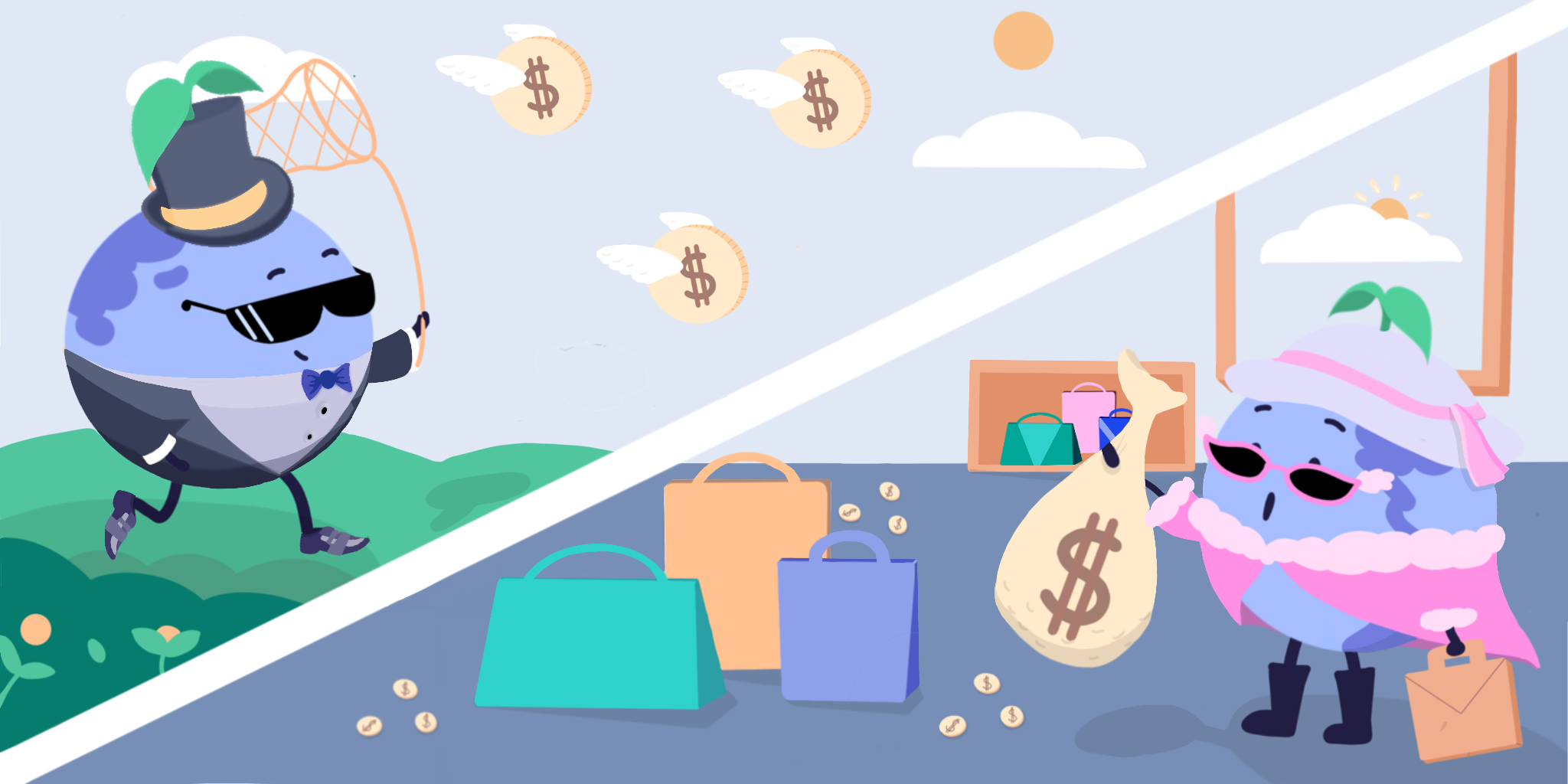
Over the last 300 years, capitalism has become the main economic system in our world . With capitalism, the means of production (the things needed to produce products and services) are owned and controlled by businesses or individuals, rather than the government
. This means that individual people run the economy without the government affecting what happens
. Instead, what happens is determined by something called the “free market”
.
Essentially, this means that people can buy whatever they want (demand) and sell whatever they want (supply) without the government getting involved in their transaction.
Now, we know that this is almost never the case; governments usually have rules that affect how and what people can buy or sell. For example, many governments do not allow recreational drugs to be sold
and they punish businesses that cause pollution, such as oil spills
.
Many governments also collect taxes and help provide things like healthcare, roads and education. They can even decide the price of certain products and services to make sure people can afford to buy them
.
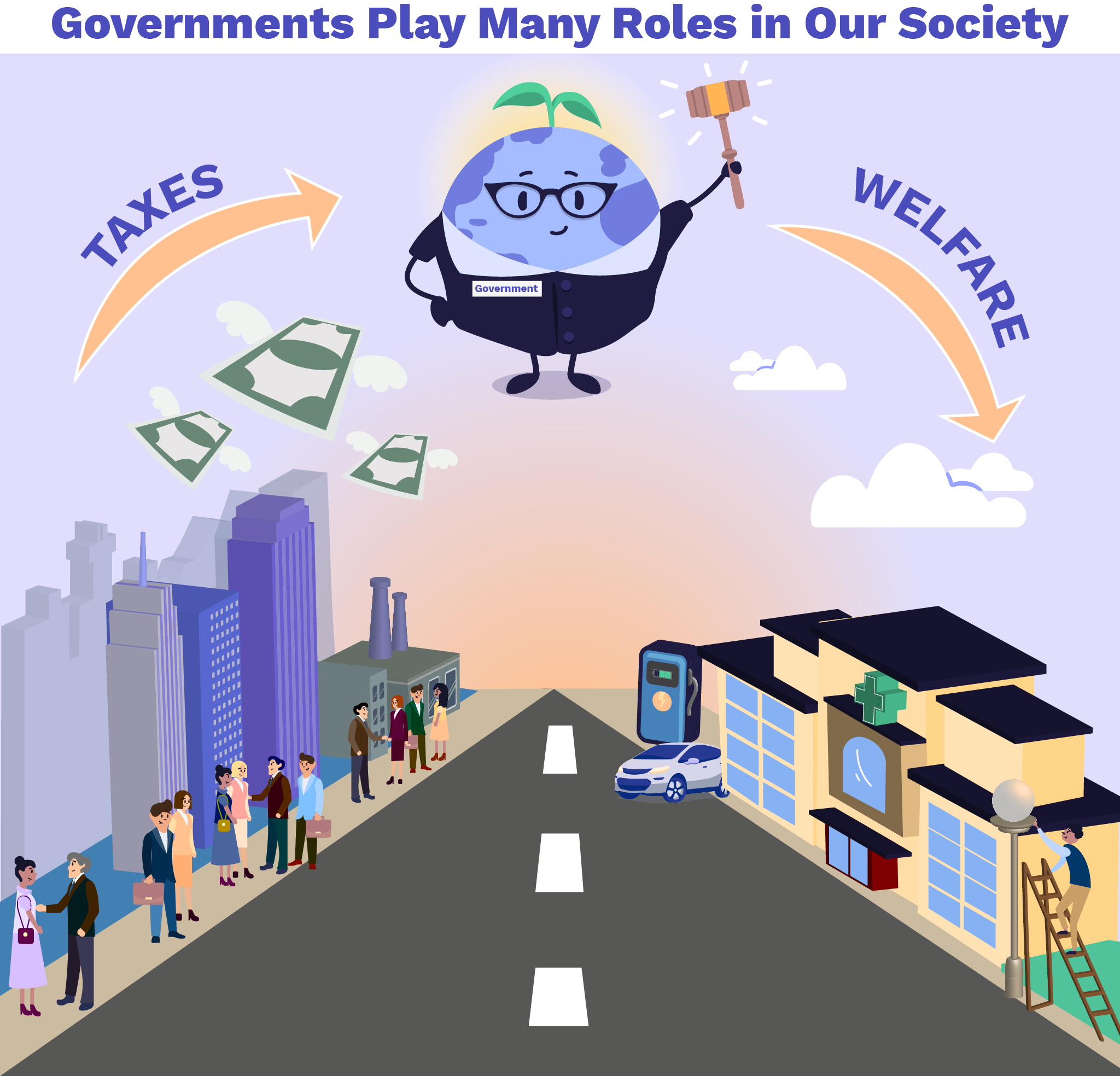
The role of the government
That was a trick question! In fact, no country has ever achieved a totally capitalist economy. Almost all economies are called mixed economies
. This means that they combine bits of both capitalism and socialism.
Why do we always hear about capitalism vs socialism?
A fully socialist economic system involves everything being owned and shared by communities rather than by individuals . In a society like this, production is decided by the government and is meant to benefit society rather than make a profit for individuals
. The shared ownership aims to make society more equal
.
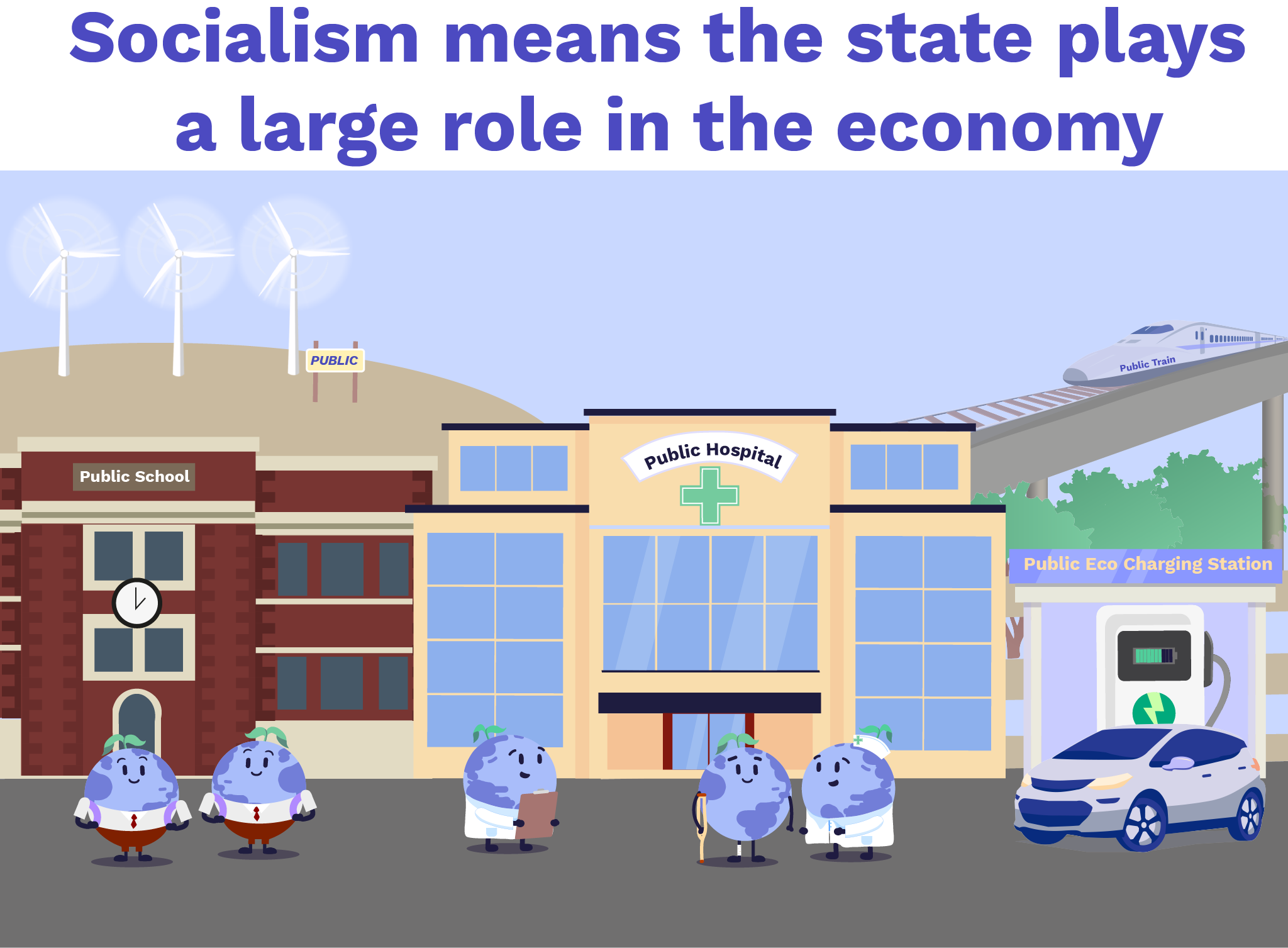
A socialist society
The rise of neoliberalism
The main form of capitalism that we’ve seen since the 1980s has been neoliberal capitalism. It was particularly popular and promoted by Ronald Reagan (president of the USA) and Margaret Thatcher (prime minister of the UK)
.
Neoliberalism tends to support deregulation (making laws like workers rights less strict), reducing government spending (particularly on social programmes), and encouraging privatisation. This is all essentially trying to make the market more ‘free’ from government intervention
.
In other words, it’s moving closer towards pure capitalism.
What does capitalism look like in different places?
Let’s take a look at how neoliberalism plays out today in two very different countries: the USA and Norway.
The United States of America
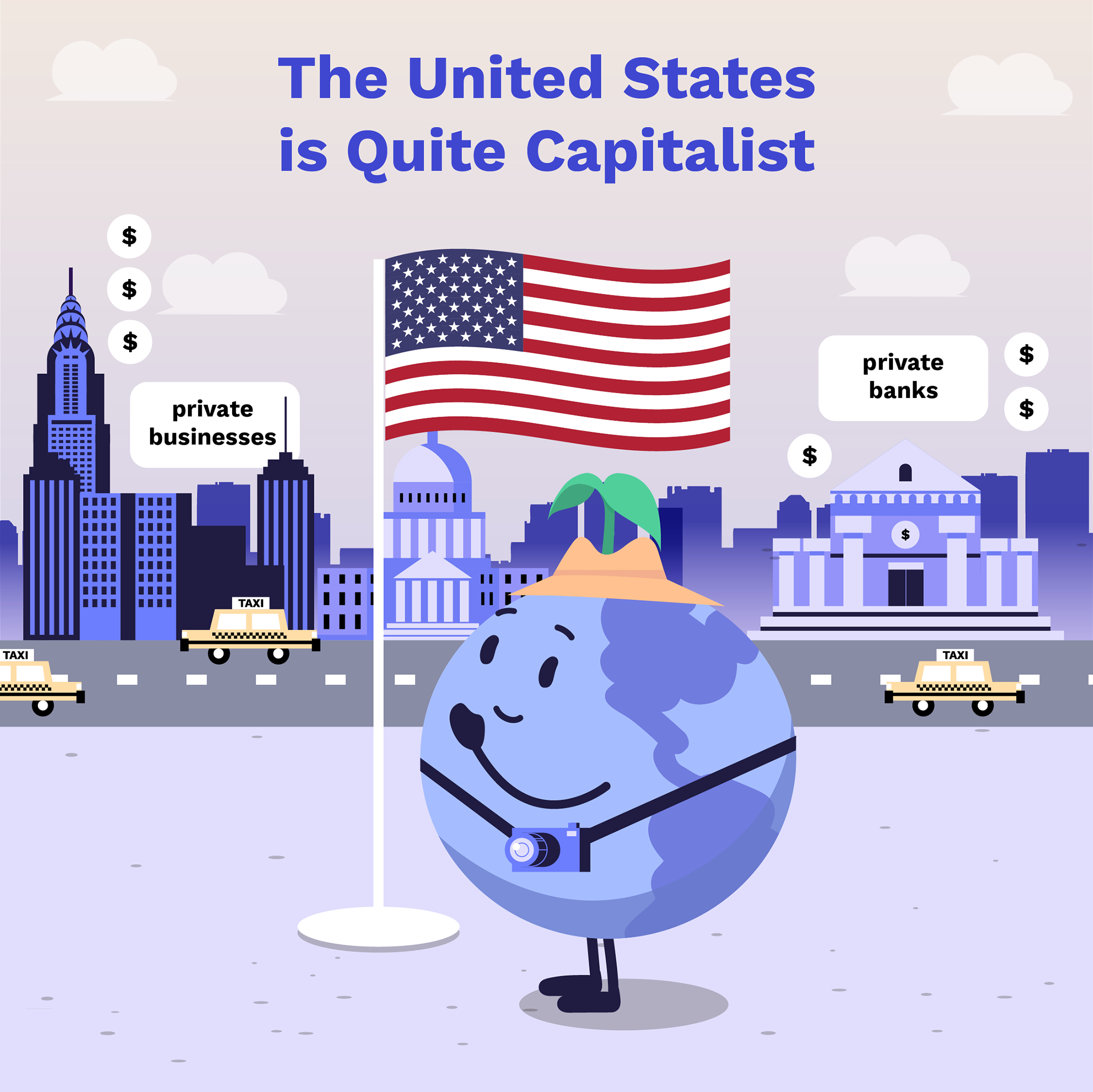
The USA is quite a capitalist country - in fact, it’s the 6th most capitalist country in the world, according to one ranking.
Even though the US places high on the index, it is still a mixed-market economy. The US is partly capitalist because the means of production are privately owned and are used to make profits
. It is partly socialist because its economy has regulations, and taxes are collected to be spent on things like education, healthcare, and transport
.
How does that compare to Norway?
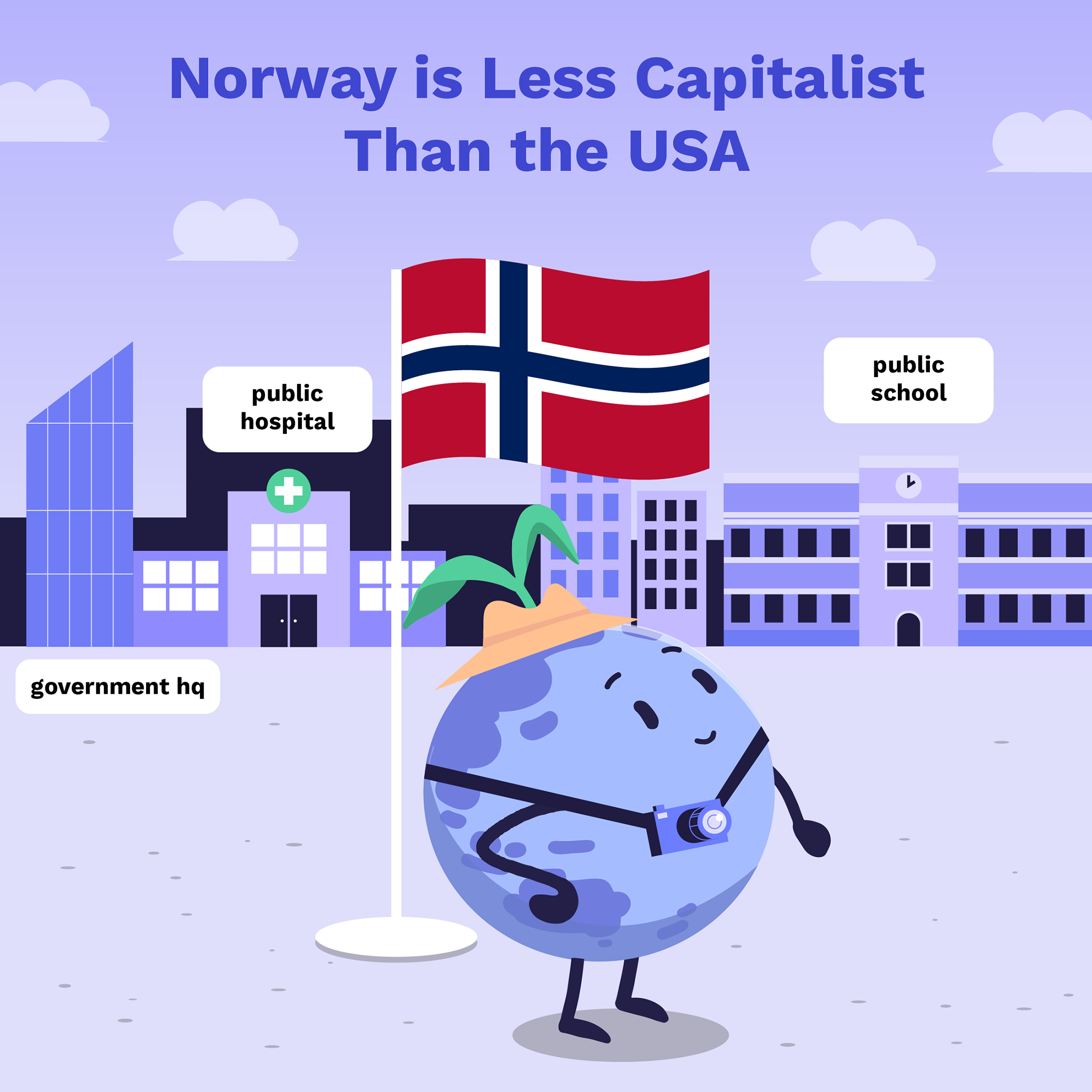
Norway is a mostly capitalist country. However, it is less capitalist than the US in the sense that the government plays a larger role in the economy.
In fact, the government in Norway owns much of the country’s largest businesses .
This means the government has been able to control businesses through ownership rather than regulation. Furthermore, around 30% of working people were employed by the government in 2015
. This is almost double the percentage of the US population employed by the government in the same year
.
Some economists have called Norway an example of "cuddly capitalism", with low levels of inequality and people looked after by the government (described as a welfare state) .
Norway’s tax system is designed to redistribute income more equally than that of the US, which is more effective at reducing poverty
:
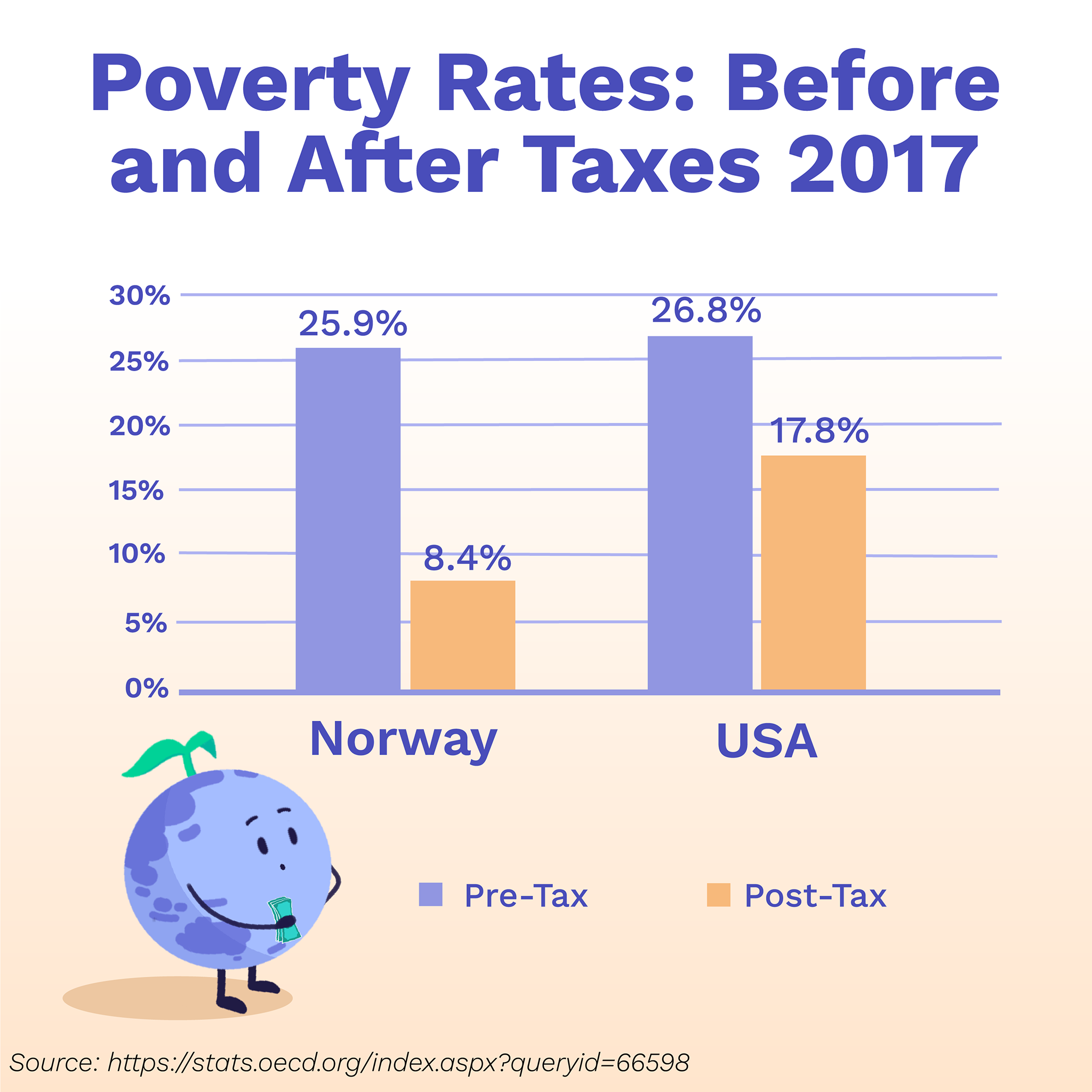
Norway’s tax system is more efficient at reducing poverty
Now that we understand the different forms that capitalism can take, let’s explore the positive and negative outcomes it can have - the good, the bad and the ugly sides.
What problems has capitalism solved?
Capitalism has led to an incredible amount of innovation and progress . This is because people or businesses have been competing to be better, in order to make more money
. For example, competition to find good ways to capture solar energy has hugely driven down the price of this renewable energy over the last few years
.
A better standard of living might also be due to capitalism . As people got richer, their quality of life also tended to improve (though only up to a certain limit)
. In fact, worldwide poverty has dramatically fallen in the last two centuries
: before then, over 80% of the world’s population lived in extreme poverty
.
That’s a reduction of more than two-thirds ! And since 1992, rates of poverty have continued to fall
.
What problems has capitalism caused?
A key part of capitalism is capital accumulation . This is the idea that the more money you have, the more money you can make
.
For example, say you own a factory that makes cars by hand. The last five years have brought you a profit of $100. With this $100 you can now buy a machine that will build the cars faster. Now that you can make more cars per year your profit for the next five years is $1000. With this $1000 you buy 10 car-making machines, which now bring you a lot more profit than before, and so on and so forth…
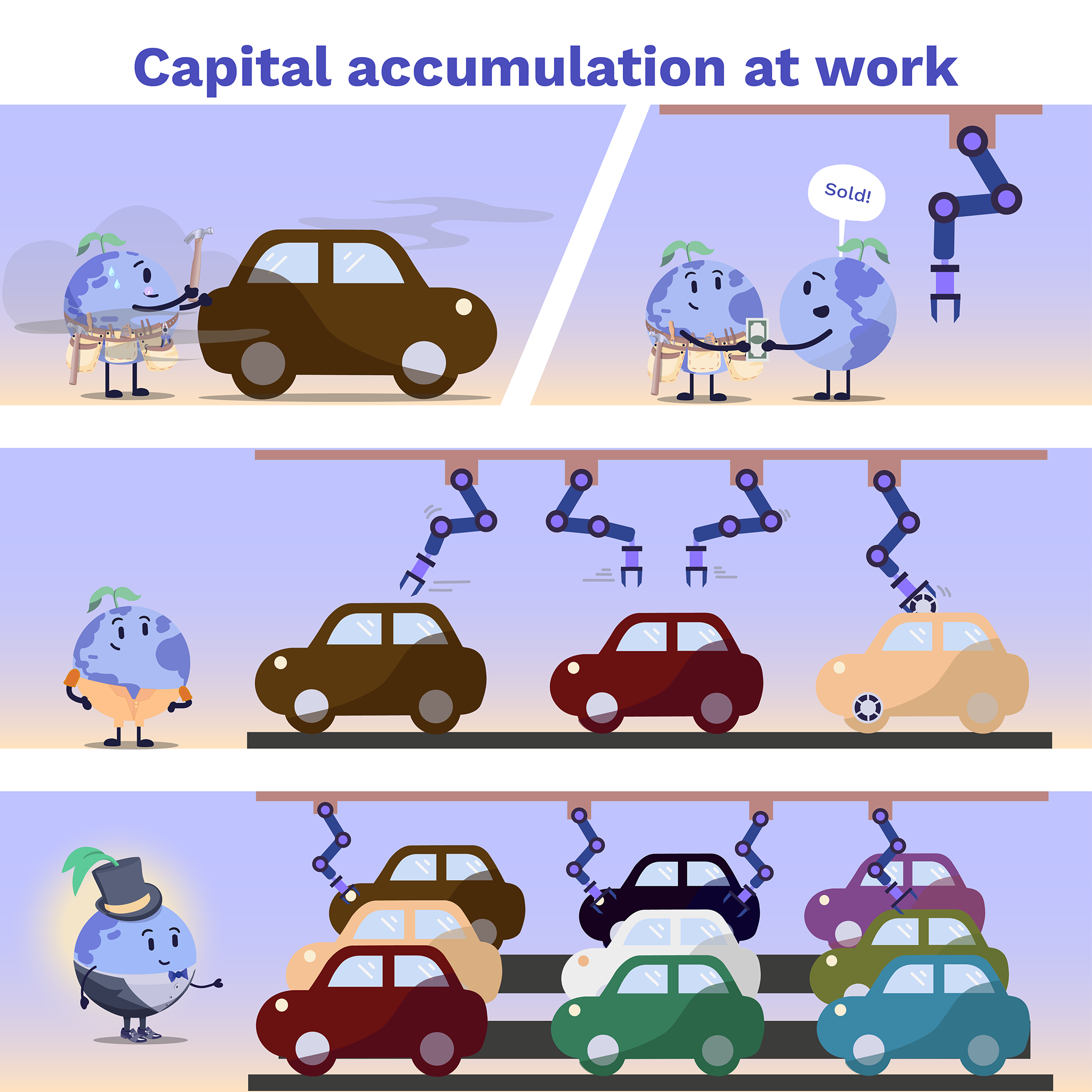
Capital accumulation at work
Most of this capital accumulation comes from the profits of businesses; these profits are being continually put back into the business. This creates a cycle where rich people continue to get more money and resources, and therefore control more and more parts of the economy and society.
While capitalism has made most people richer, due to capital accumulation it’s made the rich a lot richer.
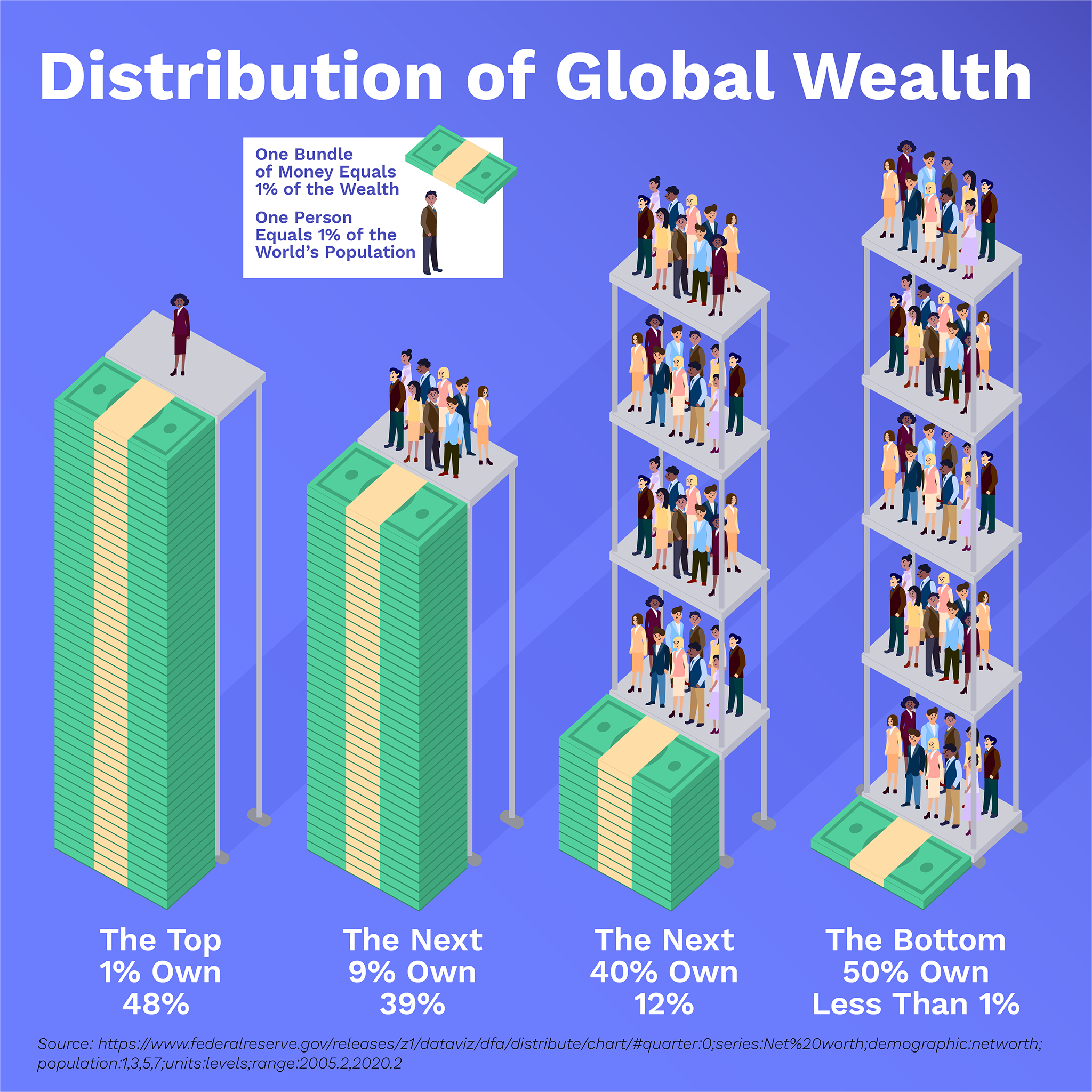
The top 1% own much more than the bottom 50%
This wealth inequality exists both within and between countries, and it stops people from getting basic human rights, like food, shelter and the ability to have control over their lives.
This is relevant to climate change because inequality is not just about money; it’s also seen in CO₂ emissions. From 1990-2015, the richest 1% were responsible for 15% of cumulative CO₂ emissions; this is twice as much as the poorest 50% of the world’s population combined
.
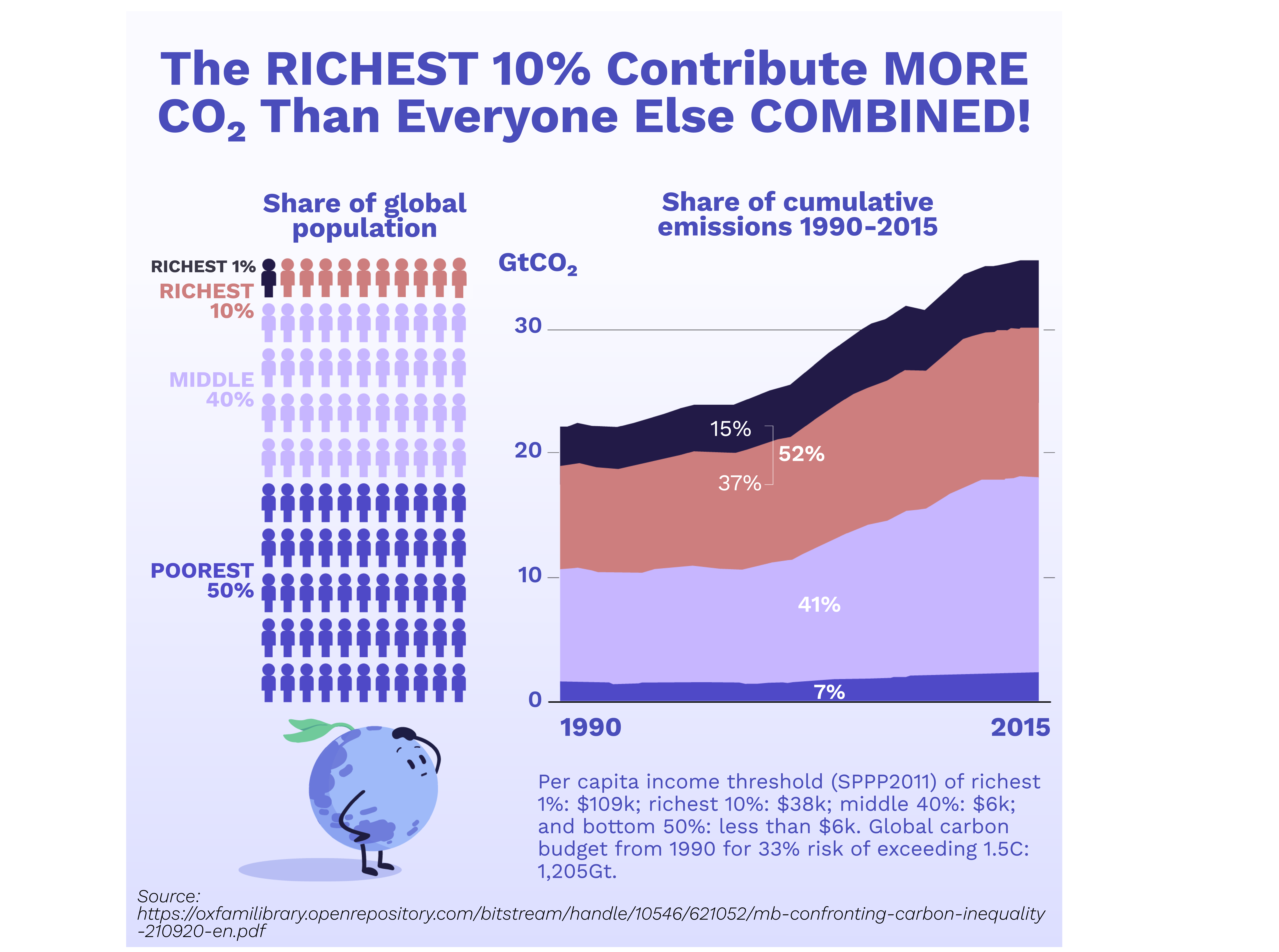
Inequalities in emissions
Aside from increasing inequality, trying only to maximise profits encourages other problems too . It can lead businesses to pay workers as little as possible, even if that means workers remain in poverty and have unsafe working conditions
.
It also encourages short-term thinking. An example of this is planned obsolescence, where products are deliberately designed to break long before they should. This means that people have to buy new ones, which then makes more money for the businesses
. Likewise, as we learnt in the last chapter, infinite growth (endless capital accumulation) is most likely not sustainable in the long run and has already caused much destruction on our planet
.
Conclusion
Capitalism does not work for everyone: it benefits a few and leaves the rest to scramble for the scraps
. The lack of access to opportunities is not fair
. So what can be done? The next few chapters will hopefully help you understand how we can try to amend and slowly transform our economic system into something that works for everyone and allows our planet’s life to thrive.